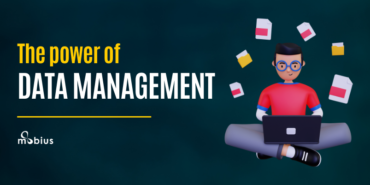My pace quickened as the threatening clouds darkened, reinforcing the weatherman’s report for the next few days. Taking lessons from the floods that hit our state the previous year, family members arrived at a solemn decision to stock all the essentials, including instant edibles. Surprisingly, our local grocer had purchased and piled indispensables ahead of the calamity, unknowingly following the game plan adopted by retail giant Walmart a decade back.
Experience is indeed the Best teacher for the Walmart Clan
In 2004 when Hurricane Frances lurked the Atlantic coast of Florida, Wal Mart’s Chief Information Officer, Linda M. Dillman directed her team to drill huge bytes of shopping history to determine frequently bought goods during Hurricane Charley. Propelled by trustworthy data, sales of the pre-stocked materials like Pop-Tarts soared, giving data-powered Walmart a clear edge. A week ahead of the imminent disaster, the company had chartered out a plan to meet consumer demands. They had followed what is termed as a Pattern-based strategy that heavily relies on measuring what happened in the past to plan ahead.
Vision, Mission, What Next?
Top executives would already realize the power of strategic planning which broadly falls into 3 parts as laid forth by the director of the Martin Prosperity Institute and former dean of the Rotman School of Management, Roger L. Martin. The first part comprises of setting a high-minded vision or mission statement followed by a series of key initiatives like geographical expansions, product launches, and the financial finishing touch being the third chunk in strategic planning. While this outlines the basic strategy model, a deeper approach to building effective strategies would be based on the issue or alignment model. One works on enhancing the basic model through the popular SWOT Analysis and the other focuses on bridging the gap between the organization and its available resources.
Singing in Harmony does Matter!
Glorious terms like integrity, dedication and reliable service decorate the walls of the top management but about 80% of the employees fail to realize their contribution to an enterprise! They sweat and toil but can’t view their piece in the puzzle to success. It is vital for an organization to grow in unison with a common set of goals in mind! That’s how the buzz “Every Little Helps” began in UK retail chain Tesco. These influential words put customers, employees, and community at the heart of its business. They pursued a habit of constantly monitoring and reviewing their strategies with internal and external data that pulled them to the right track to humongous profit.
Shifting from Annual Agendas to real-time planning
A survey conducted among 385 employees comprising majorly of executive managers and vice presidents subscribed to the Harvard Business Review pointed that 85% of them believed that the ability to make changes in a timely manner will become increasingly important to their organization and 61% of them agreed that their plans required frequent changes.
Gone is the era when planning strategies was a once in a year phenomenon. Among the 6 phases that Gartner Research Vice President – David Aron outlines, assessing current state and competencies find a prominent role as it checks the pulse of stakeholders and alerts board members for changes in their strategies.
Constant assessment, monitoring and analysis of in-house resource utilization and future business prospects find their artery in reliable data.
Stressed out with Spreadsheets? Think Big Data
Monitoring and assessing data – Easier said than done! What with 2.5 quintillion bytes of data spewed out per day! Extracting and processing data becomes a mandate for the board to look closely at the big picture. Big data analytics launches itself as a knight in shining armor enabling executives to make informed decisions and educated guesses in formulating strategies.
Data and analytics will underscore their necessity in business strategy and by 2020, strategic planning algorithms are predicted to change the behavior of over 1 billion workers worldwide. Business strategy is widely measured by Key Performance Indicators (KPI) that are laden with data and metrics. Right from collecting to sizing KPIs, data analytics can be introduced to streamline the process. Having the outcome of the KPIs accurate gives head honchos the clarity in where the strategy needs to be amended.
Fact ridden strategies prove to be more productive than instincts and assumptions made by the top tier and not capitalizing on big data would be a grave mistake. The Harvard Business Review cites the state of strategic planning tools as the main culprit and 50% of large enterprises and 75% of midsize organizations still use spreadsheets or legacy applications as their primary tool! It’s high time to trash those 70 tabbed worksheets and move over to big data platforms that strengthen the visibility of executives at their org-level performance.
Embrace Fact-Induced decisions for robust strategies
The pattern based strategy followed by the smart local grocer and the prudent retailer urges corporates to look for patterns within the massive amount of available data, understand the product or service a consumer buys, make strategic use of the information gathered through predictive analysis and model their plan accordingly.
As a member of the executive committee, surrounded by all the C’s, it would be quite intimidating if the numbers you see in terms of issues, challenges, threats, and opportunities that await the company are not right, leading to distorted and misguided strategies for the future. Be sure of the facts at hand with data fueled analytics that steers an organization in whole to make calculated schemes and also aids in bridging the gaping chasm between the management and the employees.
The Sun, The Moon, The Emperor, The Fool, Wheel of Fortune. What’s your company’s pack of Tarot cards telling you?







